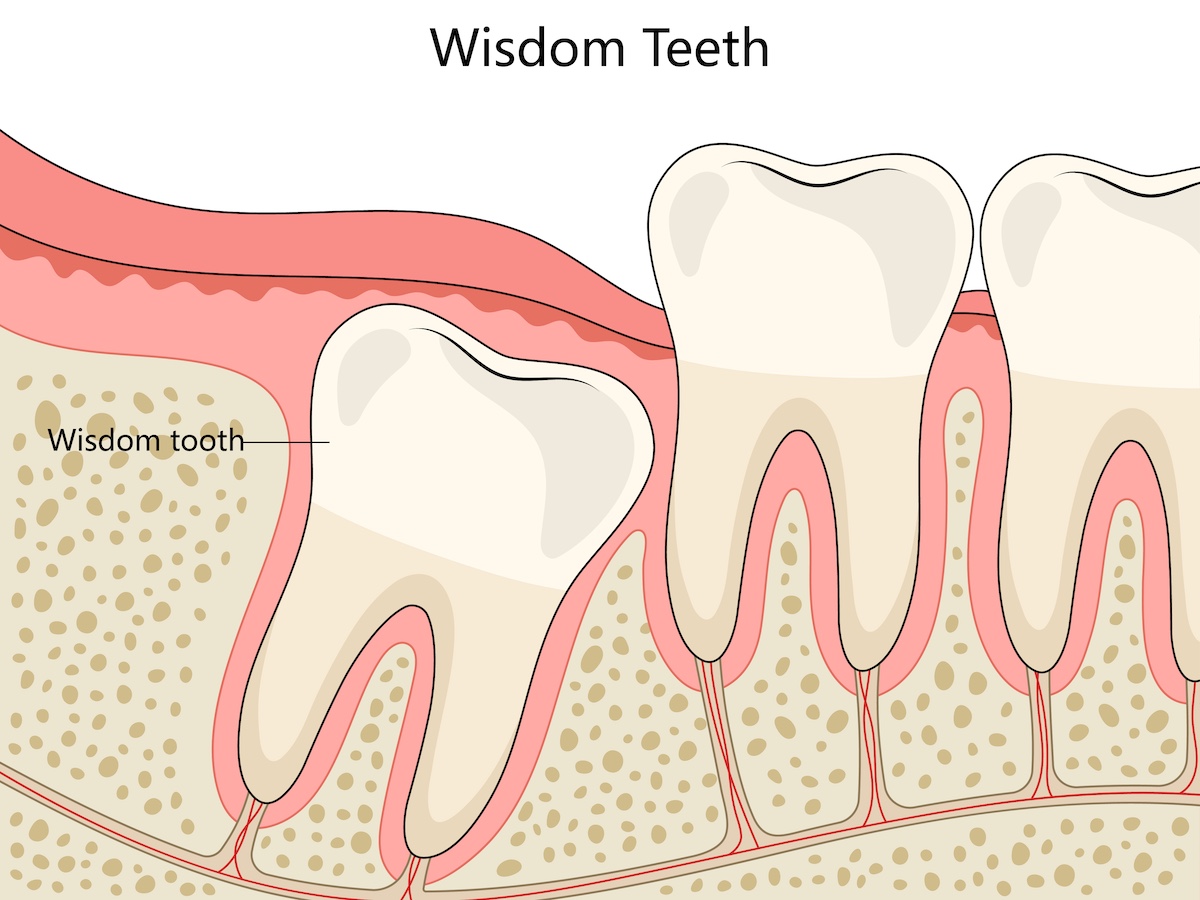Wisdom teeth — also known as third molars — are the last set of molars to develop in the back of your mouth. Most people get them between the ages of 17 and 25, but not everyone’s experience is the same. While some wisdom teeth come in without any problems, many people need to have them removed to maintain good oral health.
Why Do We Have Wisdom Teeth?
Wisdom teeth were useful to our ancestors, who had larger jaws and a diet of rough, unprocessed foods. These extra molars helped grind tough meats, roots, and plants. Over time, as diets and jaw sizes changed, our mouths became smaller — but the number of teeth we develop stayed the same. This often means there isn’t enough room for wisdom teeth to fit properly.
Common Problems with Wisdom Teeth
When there isn’t enough space in the jaw, wisdom teeth can become impacted, meaning they don’t fully emerge through the gums. This can cause several issues, including:
- Crowding: Shifting other teeth out of alignment.
- Pain or Pressure: Discomfort in the jaw, gums, or surrounding teeth.
- Infection: Food and bacteria can get trapped around partially erupted teeth, leading to gum infections.
- Cysts or Damage: Impacted teeth can sometimes cause damage to nearby teeth or bone.
Signs Your Wisdom Teeth May Need Attention
Not everyone will feel symptoms right away, but common signs that wisdom teeth could be causing trouble include:
- Pain or swelling in the back of the mouth
- Red, swollen, or bleeding gums
- Jaw stiffness or difficulty opening your mouth
- Bad breath or an unpleasant taste that doesn’t go away
If you experience any of these symptoms, it’s a good idea to see your dentist for an evaluation.
When and Why Removal is Recommended
Dentists often recommend removing wisdom teeth before problems develop — even if you aren’t currently experiencing discomfort. This is because younger patients generally recover faster and have fewer complications. Your dentist will take X-rays to see how the wisdom teeth are positioned and determine the best time for removal.
- Common reasons for removal include:
- Impacted teeth
- Risk of crowding after orthodontic treatment
- Recurrent gum infections
- Development of cysts or tooth decay in hard-to-clean areas
The Wisdom Tooth Removal Process
Wisdom tooth extraction is a routine procedure performed under local anesthesia, sedation, or general anesthesia, depending on the case. Your dentist or oral surgeon will make a small incision if necessary, remove the tooth, and clean the area before placing stitches. Most patients can return to normal activities within a few days, though complete healing takes a couple of weeks.
Recovery and Aftercare Tips
- Rest for the first 24 hours and avoid strenuous activity
- Use ice packs to reduce swelling
- Stick to soft foods like yogurt, soup, and mashed potatoes
- Avoid using straws, smoking, or vigorous rinsing for a few days to prevent dislodging the blood clot
- Follow your dentist’s instructions for cleaning and medication
The Bottom Line
Wisdom teeth are a natural part of our dental development, but they can cause problems if there isn’t enough room for them to come in properly. Regular dental visits and X-rays can help determine whether your wisdom teeth are healthy or if removal is the best option.
If you think your wisdom teeth may be causing discomfort — or if you simply want to know their status — schedule a consultation. Taking care of them early can help you avoid pain, infection, and bigger dental issues down the road.
——-
This blog post is provided for informational purposes only and should not be interpreted as medical advice. The content of this post is not intended to be a substitute for professional medical advice, diagnosis, or treatment. Always seek the advice of your doctor or other qualified health provider with any questions you may have regarding a medical condition.

